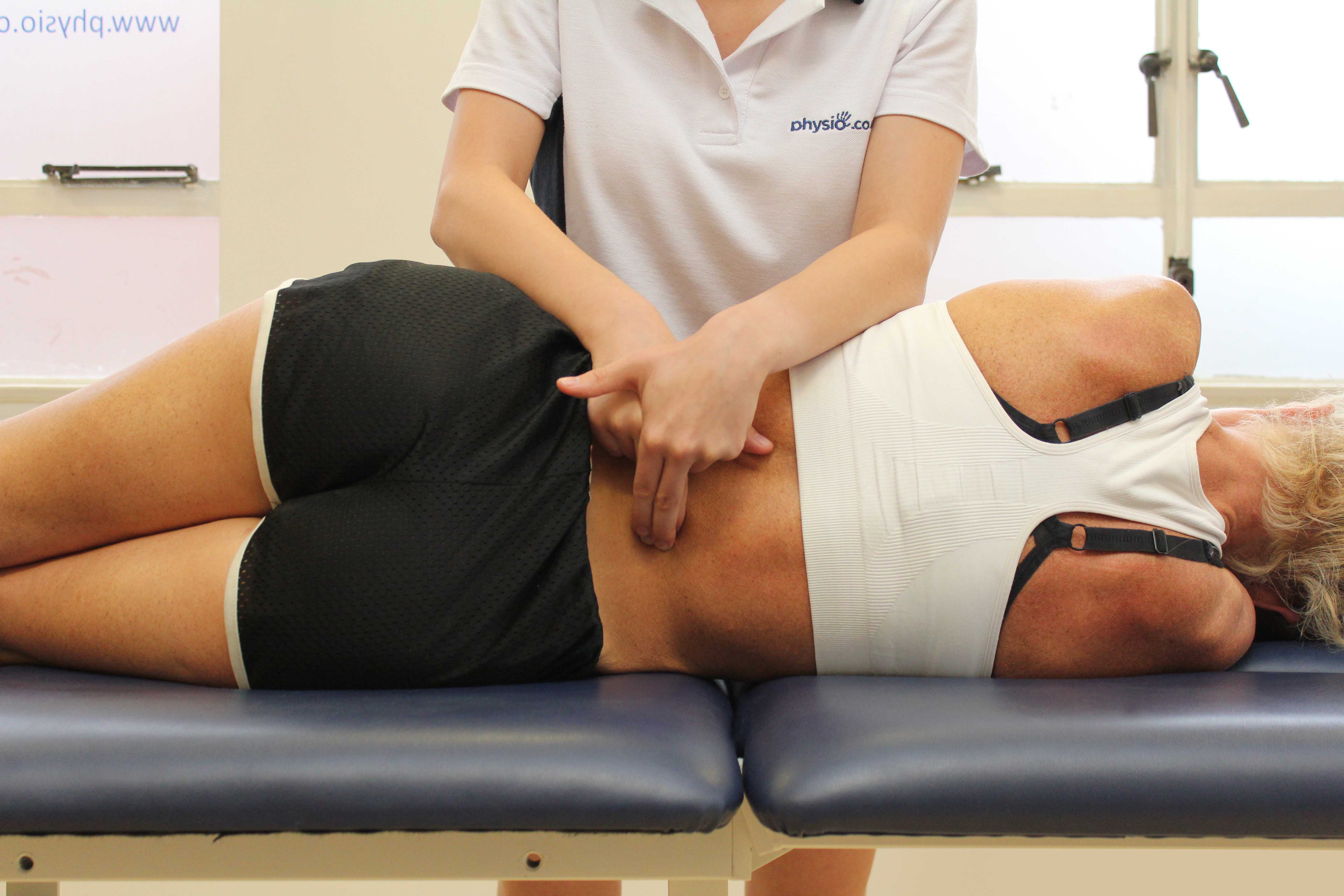Rehabilitation with a Prosthesis Following a Below Knee Amputation
A below knee prosthesis is designed to carry out the function of a missing leg. The prosthesis can vary from a functional leg to a cosmetically appeasing leg depending on patient choice. After amputation occurs the individual is assessed by a team of healthcare professionals, the multi-disciplinary team, to decide if they are suitable for a below knee prosthesis. This will depend on the individuals general health and fitness levels.
 Above: Mobilisations of the lumbar vertebrea by a physiotherapist
Above: Mobilisations of the lumbar vertebrea by a physiotherapistBenefits of Physiotherapy with a Prosthesis Following a Below Knee Amputation
The physiotherapist plays a key role in the rehabilitation for an amputee.
The physiotherapist will:
- Teach walking skills with the prosthesis
- Build up overall body strength and fitness levels
- Teach skills to manage everyday obstacles such as stairs, getting in and out of cars etc.
- Try to address obstacles in returning to work
Stages of Rehabilitation
Rehabilitation for amputees normally starts two-days post-surgery. The physiotherapist will work with the individual to develop goals and a treatment plan to meet their needs. Initially the physiotherapist will work to progress the individuals activity levels and to promote independence. Being able to walk can be dictated by healing of the stump. This can prevent the patient from using a prosthesis for some time. The physiotherapist will continue working on other activities such as transfers, to limit the effect of the stump healing on the individual’s progress. A patient will get more from their treatment if they adhere to the physiotherapist’s recommendations allowing the stump to heal and completing their exercises.
Physiotherapy input can be divided into three main stages:
- Post Operation (0-7 days)
- Pre-Prosthesis Rehabilitation (1 week- 6 weeks)
- Rehabilitation with Prosthesis (6 weeks +)
Post-operation (0 to 7 days)
Your physiotherapist will:
- Assess to see if there are any respiratory complications after the operation and will provide advice on breathing exercises and oxygen therapy.
- Teach exercises to do in bed, promoting healing and to commence the rehabilitation to increase the range of movement (ROM) in the knee and other lower limb joints.
- Carry out an assessment for suitable walking aids and/or wheelchair assessment.
- Give advice on stump care and education on pain relief, phantom limb pain and phantom sensation.
Prosthesis Rehabilitation (1 week to 6 weeks)
Your physiotherapist will:
- Progress the exercise program focusing on ROM of the knee and hips to reduce the occurrence of flexion deformities in these joints.
- Develop a strengthening program for the upper and lower limbs to assist with recovery and learning to use a prosthesis.
- Teach walking with a pneumatic post amputation mobility aid (PPAM). This can be used between 7 and 10 days post-operation. Allowing the individual to learn how to walk with a prosthesis, assist with walking-posture and balance re-education.
- Teaching skills such as transfers which helps promote independence getting in and out of bed, getting into chairs/wheelchairs etc.
Rehabilitation with a Prosthesis for a Below Knee Amputation (after 6 weeks)
Physiotherapy with a prosthesis will start when the stump has healed sufficiently to fit inside a prosthesis. If the stump is still quite swollen it will be at risk of being irritated and the wound opening. Normally you can receive your prosthesis 8 weeks post-operation. When you receive your prosthesis physiotherapy will:
- Teach donning (putting on your prosthesis) and doffing (taking off your prosthesis).
- Provide upper limb strengthening and core stability exercises.
- Teach key skills in how to manage everyday obstacles such as getting out of a chair, going up stairs, getting in and out of cars, getting up from the floor etc.
- Teach gait re-education with the new prosthesis focusing on balance and the biomechanics of walking to make mobilising more energy efficient.
- Progress walking by allowing the individual to walk independently without mobility aids if able.
- Teach jumping and running skills as below knee amputees have the capabilities of achieving the normal biomechanics of running with the correct rehabilitation program.
- Focus on a rehabilitation program which will allow the individual to walk as normal as possible disguising the prosthesis.
Summary
Physiotherapy plays a key role in the rehabilitation of a below knee amputee. The physiotherapist will teach you how to walk with your new prosthesis and manage everyday obstacles. At Physio.co.uk we will work towards achieving realistic goals which we will set with the individual helping them to maximise their potential. To arrange an assessment please call Physio.co.uk on 0330 088 7800, or book online today!

 0330 088 7800
0330 088 7800





































